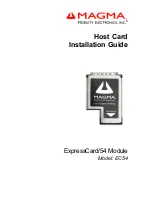
“Installing the System” (page 44)
Use this chapter to learn how to install the system.
“Booting and Shutting Down the
Operating System” (page 118)
This chapter provides information on how to boot and shut
down the operating systems supported on the server.
“Troubleshooting” (page 135)
Use this chapter to help troubleshoot and diagnose server
problems.
“Removing and Replacing Server
Components” (page 174)
Use this chapter to learn how to remove and replace server
components.
“Customer Replaceable Units
Information” (page 252)
This appendix lists the field replaceable units (FRU).
“Upgrades” (page 257)
Use this appendix to learn upgrade procedures.
“Core I/O Card Utilities” (page 277)
Use this appendix for information on core I/O cards that
need additional configuration.
“Utilities” (page 310)
This appendix provides information on Extensible Firmware
Interface (EFI) Boot Manager.
Typographic Conventions
This document uses the following conventions.
%
,
$
, or
#
A percent sign represents the C shell system prompt. A dollar
sign represents the system prompt for the Bourne, Korn, and
POSIX shells. A number sign represents the superuser prompt.
Command
A command name or qualified command phrase.
Computer output
Text displayed by the computer.
Ctrl+x
A key sequence. A sequence such as
Ctrl+x
indicates that you
must hold down the key labeled
Ctrl
while you press another
key or mouse button.
ENVIRONMENT VARIABLE
The name of an environment variable, for example,
PATH
.
ERROR NAME
The name of an error, usually returned in the
errno
variable.
Key
The name of a keyboard key.
Return
and
Enter
both refer to
the same key.
Term
The defined use of an important word or phrase.
User input
Commands and other text that you type.
Variable
The name of a placeholder in a command, function, or other
syntax display that you replace with an actual value.
[]
The contents are optional in syntax. If the contents are a list
separated by |, you must choose one of the items.
{}
The contents are required in syntax. If the contents are a list
separated by |, you must choose one of the items.
...
The preceding element can be repeated an arbitrary number
of times.
Three vertical periods
Indicates the continuation of a code example.
|
Separates items in a list of choices.
WARNING
A warning calls attention to important information that if not
understood or followed will result in personal injury or
nonrecoverable system problems.
CAUTION
A caution calls attention to important information that if not
understood or followed will result in data loss, data corruption,
or damage to hardware or software.
14















































